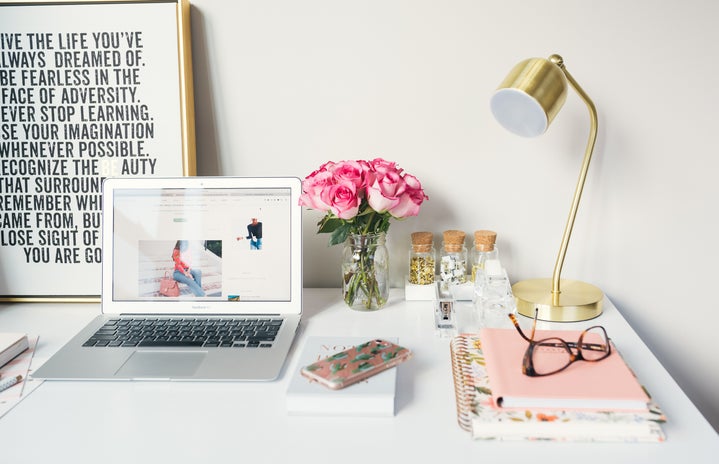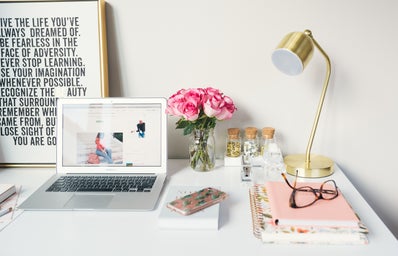I feel like all first-time-living-without-your-parents locations, including dorms, apartments, and anything in between, are all the same–small, dark, and uncomfortable. It’s hard to feel happy and content in these spaces when you don’t feel completely comfortable and aren’t happy with the place you’re living, and this can bleed out and affect other parts of your life. I lived through this fairly recently, making adjustments to my room once and then again when I moved, and I’ve compiled my top tips for making my small, like, crazy small bedroom feel bigger.
1. Mirrors
This is arguably one of the most well-known interior design tips. Every TV show and blog post about interior design in small spaces highlights mirrors early on, and for good reason. Mirrors allow for more depth in the area, as well as brighten up your room by reflecting any light. You can use large mirrors, or hang several small shaped mirrors in a cluster for the light benefit as well as a fun design benefit.
2. Keep Your Windows Open
I feel like this and mirrors go hand in hand. Keeping your windows open without curtains or blinds (keep in mind I’m not saying don’t put them up because they can add a lot of texture to a room, just keep them open) allows for a lot of natural light, which in my experience makes a room feel bigger than any dingy fake dorm or apartment lights. This one also goes hand-in-hand with mirrors–by angling your mirror in a way that it reflects the natural light, the two together can magnify your space in an amazing way.
**If you don’t have large windows or they’re in an awkward place (my last apartment had a window in my bedroom in the most awkward place, and even when it was open it produced almost no light), I’d recommend filling any lamps with lightbulbs that are made for “daylight.” It makes artificial daylight, giving you the feeling of bright, open windows even if they’re not possible with your floorplan.
3. Keep your furniture around the edges of your room
Doing this is fairly easy. This maximizes floor space and ensures that you’re not tripping over nightstands or running into table legs. Plus having a bigger, more open space makes your brain happy and successfully tricks it into thinking you have more room in your place than you actually do.
4. Use light colors
Using light colors, not just on your walls, makes your space feel more open and airy. Utilize this with your open windows to allow more light to reflect off your mirrors (*wink*), and your space will feel like a completely new area. Be careful to not use exclusively light colors though, because then your room won’t have a focal point and you’ll just feel like you’re floating. It sounds good in theory, but trust me, it isn’t.
5. Vertical storage
To help optimize your limited floor space, taking advantage of vertical storage is key. It still gives you the storage you need but helps to keep your floors clear and open, free for walking and impromptu dance parties for one.
One of the most important things to being successful in life is to be comfortable in the space you’re living in, and you can’t feel comfortable if you feel cramped and crowded. All of these tips are things I’ve learned and have been using living in my tiny off-campus apartment for the past couple of years.


